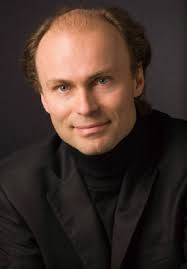
“Man of La Mancha” is the adventurous story of a man on the brink of madness. To outsiders he may seem insane or even out of his mind, but to Sancho and Dulcinea, he is perfectly sane, seeing the beauty in life instead of the pain. This story “Don Quixote de la Mancha,” written by Miguel de Cervantes was the first Novel ever written. Pretty impressive. “Man of La Mancha” takes this classic and turns it into a musical fit for the stage, and oh how well it is done. I thoroughly enjoyed myself at the Power Center during Sunday’s matinee and, judging by the laughing and applause throughout the show, so did my companions in the audience. The student theatre group MUSKET does an excellent job performing and presenting this piece to the campus community.
I remember reading an excerpt of the novel in high school, but that only gave me the general story line of a self proclaimed knight in a time after chivalry, his battles with windmill giants and the evil enchanter, and his quest to be dubbed a true knight with his lady by his side. Incredibly funny! Especially when acted out by people on a stage. It was hard to believe that this man was actually so ridiculous as to think himself a knight, Aldonsa as his Lady Dulcinea, his servant as his Squire Sancho, and the Innkeeper as a mighty Lord of a castle. The presentation was wonderful.
The musical is written to take place in a jail in which Cervantes is being kept to await trial by the Spanish Inquisition. While waiting, he is put on trial by his jail mates. His defense is the story of his eccentric knight acted out by the prisoners themselves. This format flowed really well and the actors transitioned from reality to imagination seamlessly.
And it was so funny. Sancho provided some of the best comic relief AND he had the perfect singing voice to represent his character. You would have to hear it to understand, but it was comedic and sort of serious at the same time.

Then the show got really sad for a few minutes when Don Quixote’s nephew attempted to destroy this beautiful dream, but thankfully Dulcinea saved the dream and helped Quixote remember everything before passing away. “Don Quixote is not dead!” Dulcinea exclaims over the body of the man that had made up this identity. Cervantes’ story lives on today and imagination is key to society. Where would we be without Disney, yesteryear’s Don Quixote?

Definitely one of my top choices of the events I’ve gone to. I’ve enjoyed so many events so far this year that it becomes difficult to write that statement, but I am confident that it is a high ranking event in my arts calendar. And like I always say, get out there and see these things! They’re usually pretty cheap and provide many different times to attend. This is what makes our college experience an experience. I’ve expanded my cultural awareness, artistic involvement, and my own personal boundaries by going out to theaters and performances all year. Now it’s your turn.
As always,
This is Danny Fob: Artist and Art Reviewer






